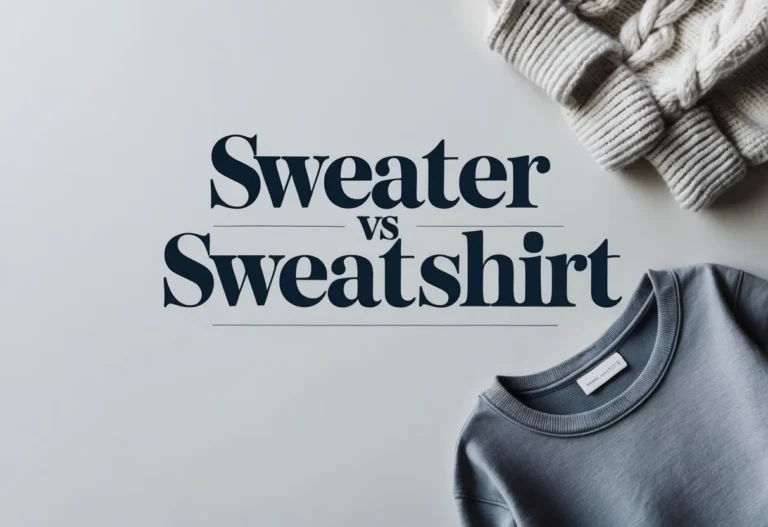Golf shirt materials play a crucial role in a golfer’s comfort and performance on the course. Choosing the right fabric can help manage sweat, improve movement, and keep the player cool during long rounds. The best golf shirts are made from materials like polyester, spandex, and bamboo viscose because they balance moisture-wicking, breathability, and durability.

Cotton, while soft and comfortable, tends to absorb sweat and dry slowly, making it less ideal for active play. Blends that combine cotton with synthetic fibers offer a better mix of comfort and performance. Meanwhile, fabrics with stretch, such as those containing spandex, allow for greater flexibility and freedom of movement without losing shape.
Eco-friendly options like bamboo viscose are growing in popularity, offering added benefits like UV protection and odor resistance. Understanding the unique qualities of each material helps golfers choose shirts that best fit their needs and the conditions they play in.
Key Takeways
- Moisture control and comfort are essential for golf shirt performance.
- Stretch and breathability improve movement and keep players cool.
- Sustainable materials offer added benefits while supporting the environment.
What Are Golf Shirt Materials?
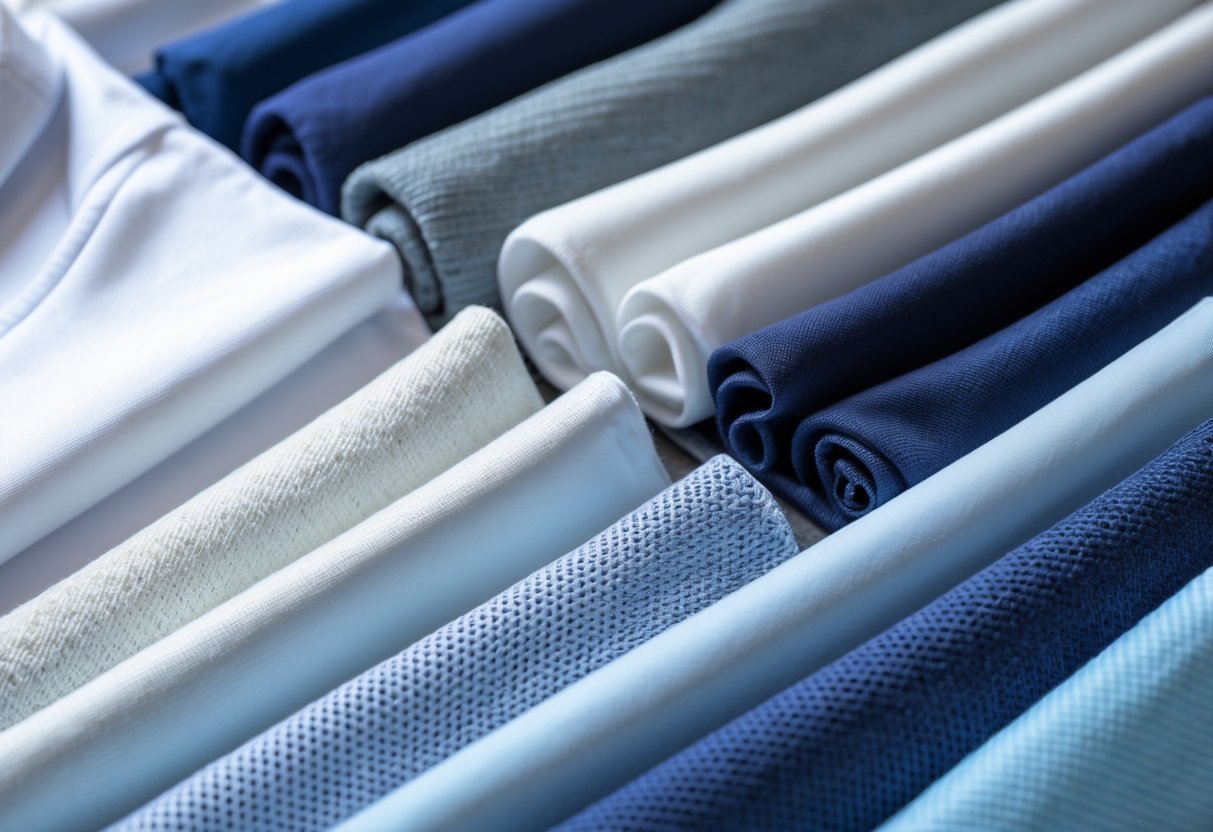
Golf shirts use specific fabrics designed to balance comfort, performance, and style on the course. The materials focus on moisture control, breathability, and flexibility to support physical movement and all-day wear. Choosing the right fabric affects how well the shirt performs during play and how it feels in different weather conditions.
Role of Fabric in Golf Performance
Golf shirt fabrics work to keep the player cool, dry, and unrestricted during a round. Polyester is a common choice for its lightweight, moisture-wicking, and quick-drying properties. It pulls sweat away from the skin and allows it to evaporate, helping maintain comfort even in heat.
Stretch fabrics that blend polyester or cotton with spandex improve flexibility. This stretch factor is key for freedom of movement, allowing golfers to swing without shirt restrictions. Fabrics also resist wrinkling, making them look neat without ironing after long use.
Some golf shirts include UV protection in the fabric to shield from sun damage. Durability is critical too; quality golf shirt material holds its shape and color after many washes. Overall, the fabric directly impacts a golfer’s comfort, focus, and performance during the game.
Golf Shirt Fabrics vs. Regular Shirts
Golf shirt fabrics differ sharply from those used in regular shirts. While cotton is soft and breathable, it absorbs sweat and dries slowly, which can cause discomfort on the course. Regular shirts often lack the technical features needed for active sports.
Golf shirts usually use synthetic fabrics like polyester or nylon, sometimes blended with natural fibers, to enhance moisture management, elasticity, and durability. These fabrics dry faster and allow air flow, reducing overheating and sweat build-up.
Spandex blends common in golf attire provide needed stretch, unlike most regular shirts, allowing unrestricted movement necessary for a proper golf swing. Golf shirts also resist wrinkles and shrinkage better than many casual fabrics, which helps maintain a sharp appearance after repeated wear and washing.
This specialized fabric design sets golf shirts apart from everyday clothing, prioritizing athletic function without sacrificing style.
Key Fabric Properties in Golf Shirts
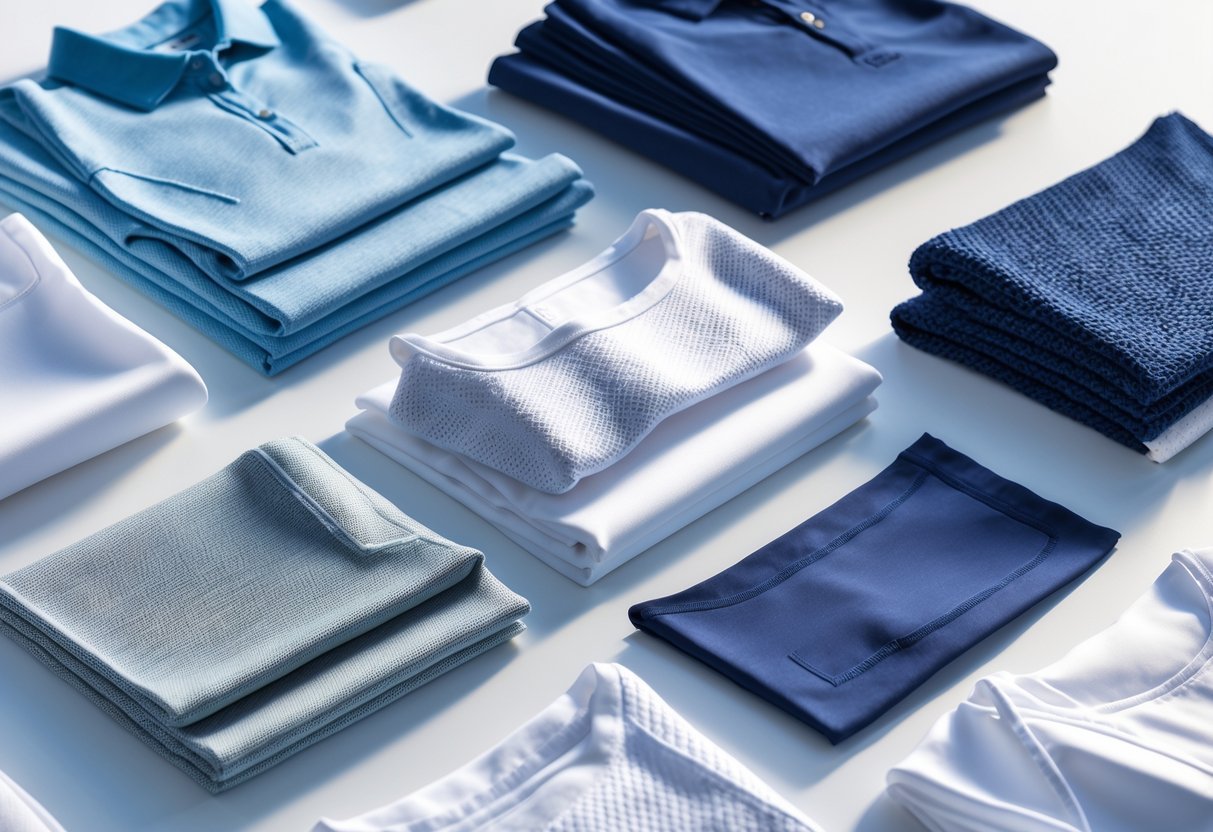
Golf shirt fabrics need to manage heat, moisture, and movement effectively. The best materials offer airflow, move sweat away from the skin, feel comfortable for hours, and endure many rounds without losing shape. Each of these factors plays a vital role in how the shirt performs on the course.
Breathability and Airflow
Breathability is crucial for staying cool during a round, especially in warm weather. Fabrics that allow air to pass through help regulate body temperature. Polyester and nylon blends can be engineered with micro-holes or mesh panels to increase airflow.
Natural fibers like cotton are breathable but don’t ventilate as well under heavy sweat. Synthetic fibers often outperform natural ones because they combine breathability with moisture control. Breathable materials reduce overheating and limit discomfort caused by trapped heat and humidity.
Moisture-Wicking and Moisture Management
Moisture-wicking fabrics pull sweat away from the skin and push it toward the fabric’s surface to evaporate quickly. This keeps golfers dry and prevents the heavy, clingy feeling cotton often produces after sweating.
Polyester and nylon are excellent moisture-wicking fabrics. Cotton tends to absorb and hold moisture, which can cause discomfort and chafing. Some fabrics combine polyester with spandex to add stretch while maintaining moisture control.
Effective moisture management also prevents cold sweat chills during cooler weather by keeping skin dry and warm.
Comfort and Fit
Comfort depends on softness, flexibility, and weight. Cotton is soft and familiar but may lack stretch. Adding spandex (3-5%) to polyester or cotton provides necessary elasticity, allowing the fabric to move with a golfer’s swing.
Fit matters for comfort during active movement. Stretch blends help shirts hold shape and avoid sagging or bunching. Lightweight fabrics reduce bulk, and finishes can enhance softness without sacrificing performance.
Proper fit and fabric flexibility reduce distractions and help maintain focus on the game.
Durability and Longevity
Golf shirts endure frequent washing, sun exposure, and movement, so fabric durability is key. Polyester is highly durable, wrinkle-resistant, and retains color well even after many washes.
Cotton may shrink, wrinkle, and fade if untreated. Blends can improve durability while offering comfort. Nylon is strong and abrasion-resistant but tends to be more expensive.
Fabrics with shape retention, such as those containing spandex, maintain their look and fit over time. Durable fabrics reduce the need for replacements and keep golfers looking sharp round after round.
Popular Golf Shirt Materials and Their Benefits
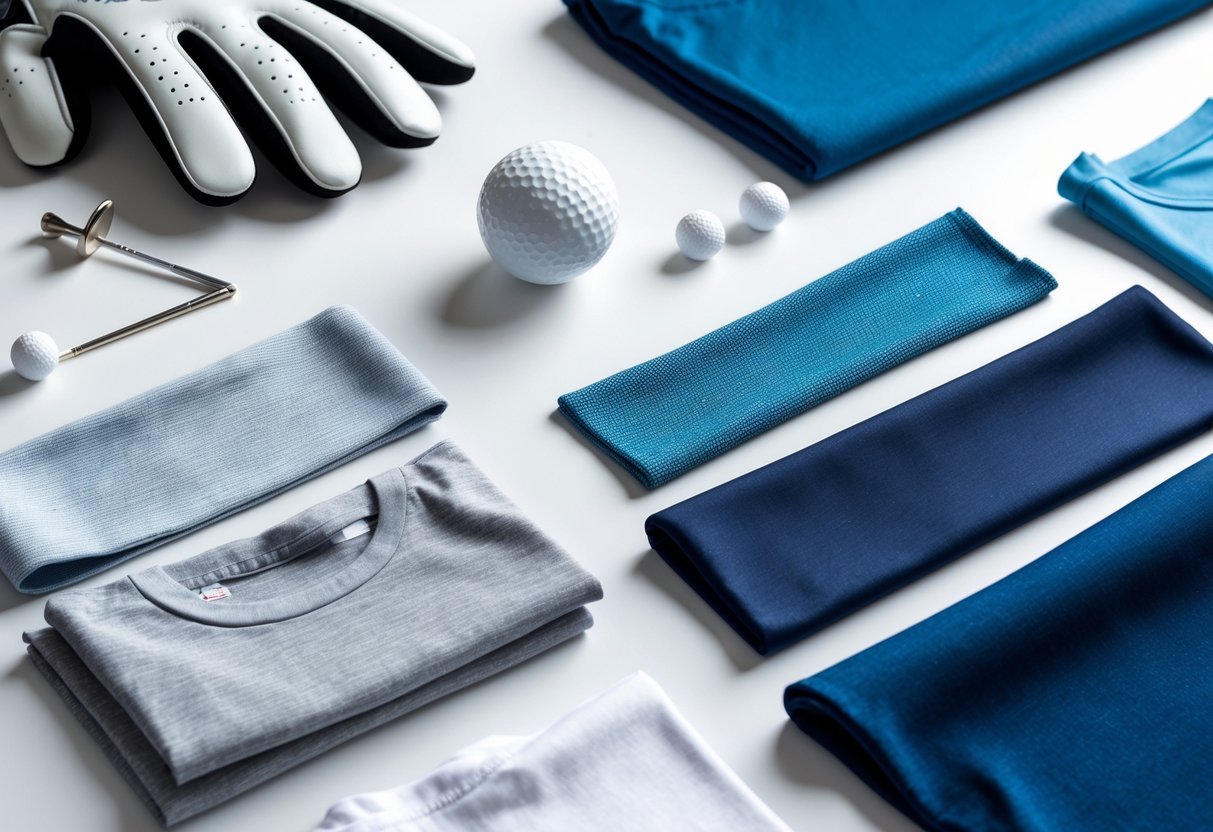
Golf shirts come in a range of materials that help players stay comfortable and perform well. The choice of fabric affects breathability, moisture control, durability, and freedom of movement. Understanding these qualities can guide players to pick the best shirt for their needs.
Polyester: The Performance Standard
Polyester is widely used in performance golf apparel due to its durability and moisture-wicking abilities. It dries quickly, which helps golfers stay dry and comfortable even during intense rounds.
This material resists wrinkles and shrinking, making it easy to care for. Polyester shirts often hold their shape well after many washes, maintaining a neat look. While polyester is less breathable than natural fibers, blends with cotton or mesh panels improve airflow.
Additionally, polyester naturally blocks some UV rays, providing extra sun protection on the course. It’s an ideal choice for golfers who want a low-maintenance, long-lasting shirt that supports active movement.
Cotton: Classic Comfort
Cotton is a natural fiber prized for its softness and breathability. It allows air to flow freely, which helps regulate body temperature during sunny days on the course.
Golf shirts made from cotton feel comfortable against the skin and wick away some moisture, though they dry slower than synthetic fabrics. Cotton requires minimal care and is easy to wash and iron, making it a practical option.
This fabric tends to be less expensive but can wear out faster than synthetic blends. Cotton remains a favorite for golfers who value comfort and a traditional look over high-tech performance features.
Nylon: Lightweight and Quick-Drying
Nylon is known for being lightweight and quick-drying, making it a popular choice in performance fabrics. It helps keep golfers dry by pulling sweat away from the body efficiently.
This fabric is strong and resists abrasion, contributing to the shirt’s durability over many rounds. Nylon also offers some natural UV protection, helping to shield skin from the sun’s rays.
While not as soft as cotton, nylon’s breathability is good, especially in athletic cuts designed for golf. Players who prefer a lightweight, fast-drying shirt with decent stretch often choose nylon for their golf apparel.
Blends and Stretch Materials
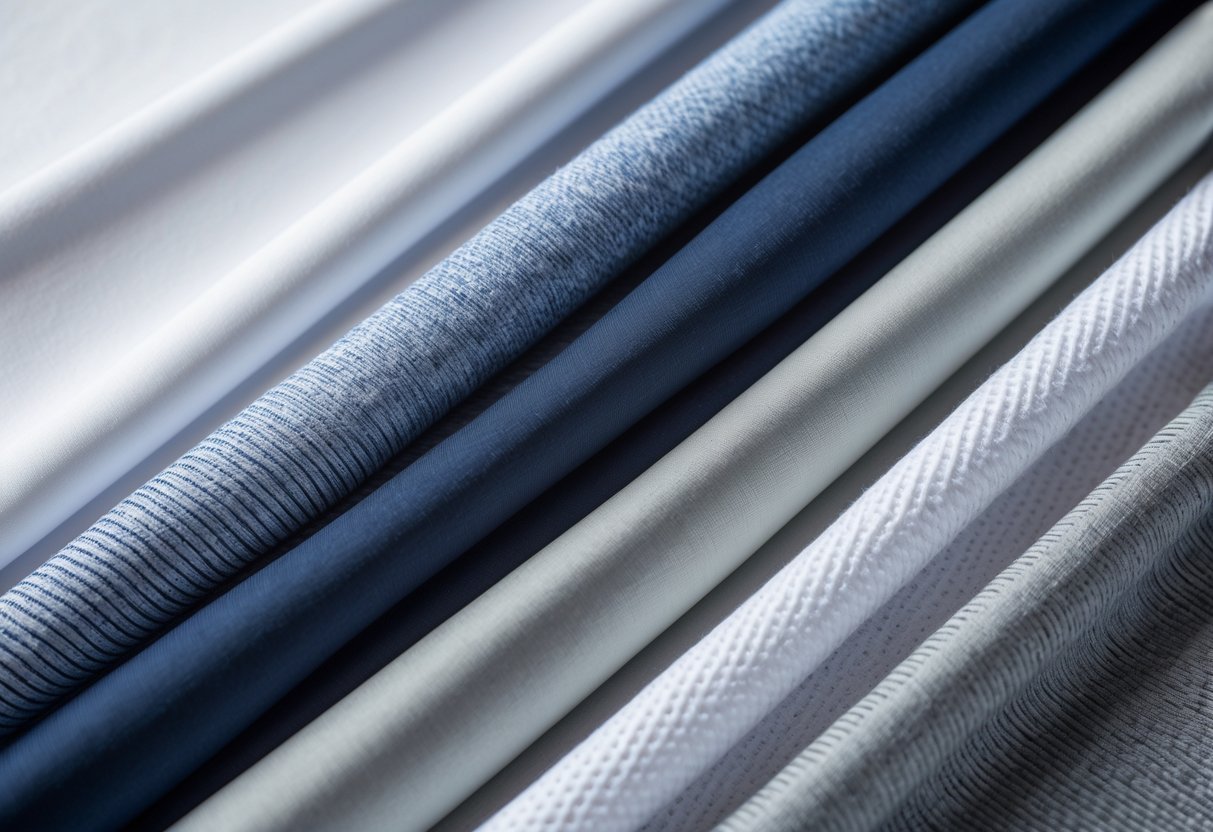
Golf shirts often include blended fabrics and stretchy materials to enhance comfort, durability, and movement. These fabrics balance breathability, moisture management, and flexibility, making them practical for different playing styles and conditions.
Polyester Blends for Versatility for best Golf Shirt Materials
Polyester blends combine polyester with other fibers like cotton or spandex to deliver balanced performance and comfort. These blends are durable, resist wrinkles, and dry quickly, making them low-maintenance.
They often blend polyester with cotton to improve breathability while keeping moisture-wicking abilities. This mix prevents the shirt from feeling too heavy or stiff. Polyester-cotton blends also maintain color well after washing.
Polyester blends stand out for their resistance to shrinking and fading. They hold up through repeated wear and washing, which is important for regular golfers seeking long-lasting shirts.
Spandex and Elastane for Flexibility
Spandex and elastane are synthetic fibers known for their excellent stretch and recovery. These materials provide the flexibility needed for a full golf swing without restriction.
While spandex itself does not wick moisture well or breathe strongly, its ability to stretch makes it valuable when combined with other fabrics. It helps shirts keep their shape, even during intense movement.
A small amount of spandex or elastane in a shirt offers comfort by allowing free, natural motion. This is especially helpful in areas like the shoulders and back, where extra stretch supports a smooth golf swing.
Spandex Blends in Modern Golf Shirts
Modern golf shirts often feature spandex blends with polyester or cotton to merge stretch with moisture management and durability. These blends combine the strengths of each fabric for better overall performance.
For example, polyester-spandex blends provide lightweight, moisture-wicking properties with added flexibility. This helps golfers stay dry and comfortable while moving freely on the course.
Spandex-cotton blends emphasize softness and breathability, while retaining stretch. These blends suit players who want a classic feel but need freedom of movement during play. Care instructions vary based on the fabric ratio, so checking labels is important.
Performance and Specialty Golf Shirt Fabrics
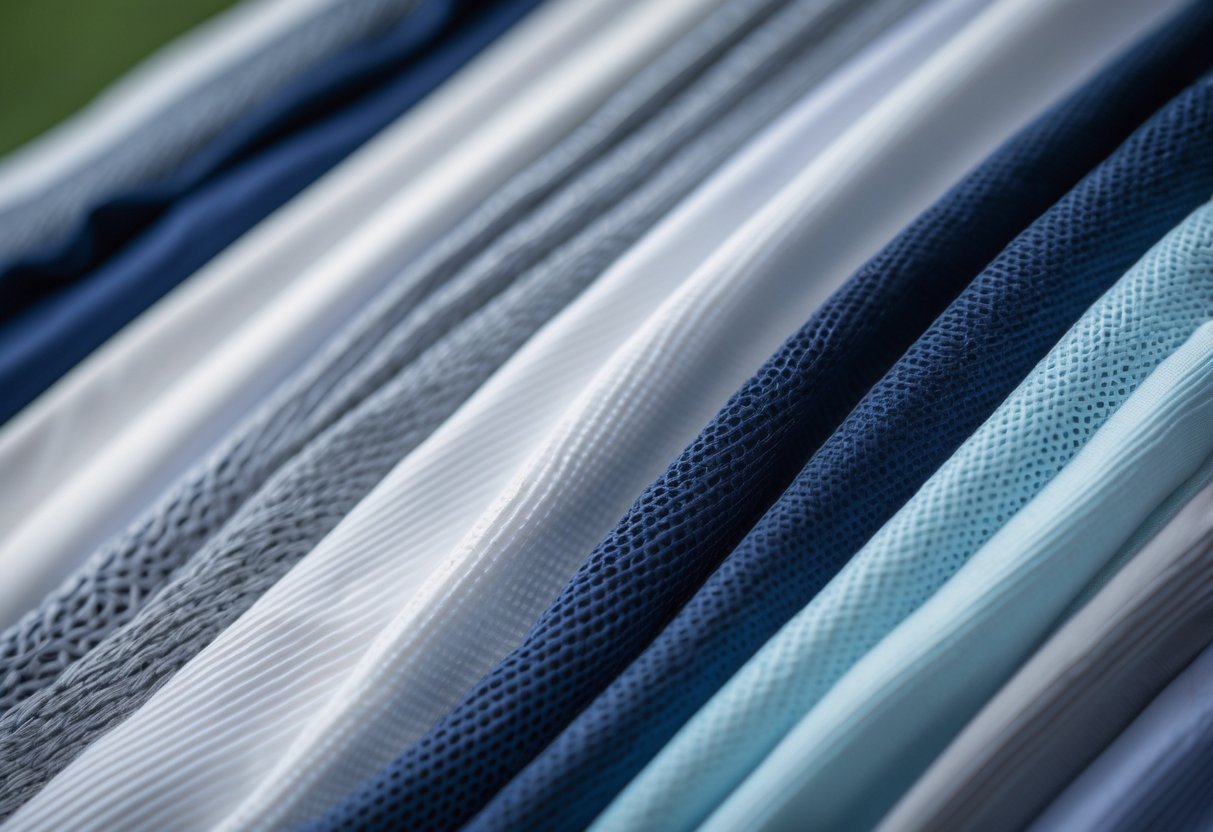
Golf shirts designed for performance focus on keeping players comfortable and protected during long hours on the course. These fabrics manage sweat effectively, shield skin from harmful ultraviolet rays, and offer easy care to reduce maintenance time without losing quality.
Moisture-Wicking Technology Explained
Moisture-wicking fabrics pull sweat away from the skin to the shirt’s outer surface, where it evaporates quickly. This keeps the golfer dry and helps regulate body temperature during intense play.
Polyester is the most common material used for moisture-wicking because it does not absorb sweat. Instead, it channels moisture outward, unlike cotton, which soaks sweat and stays damp.
Many performance golf shirts have micro-holes or mesh zones that increase breathability. These features work together to keep air flowing and reduce overheating, especially in hot or humid conditions.
UV Protection in Golf Shirts
UV protection in golf shirts helps shield skin from the sun’s harmful ultraviolet rays, reducing the risk of sunburn and long-term damage.
Fabrics designed with UV-blocking treatments have a rating called UPF (Ultraviolet Protection Factor). A UPF of 30 or higher is considered effective for golf wear and is becoming more common in performance polos.
Polyester fabrics often include built-in UV protection, making them a popular choice for players exposed to strong sunlight. This feature keeps golfers safer during afternoon rounds, especially in regions with intense sun exposure.
Easy Care Features
Golf shirts with easy care features save time and effort, as they require minimal ironing and retain their shape after washing.
Polyester and polyester blends resist wrinkles and dry quickly, which means they look good even after repeated use. This durability reduces returns and maintains a sharp appearance on the course.
Stretch blends, including spandex, help shirts hold their form and resist sagging collars or stretched sleeves. These fabrics clean well and often resist shrinking, making them practical for busy players and golf apparel brands.
Emerging and Premium Golf Shirt Fabrics
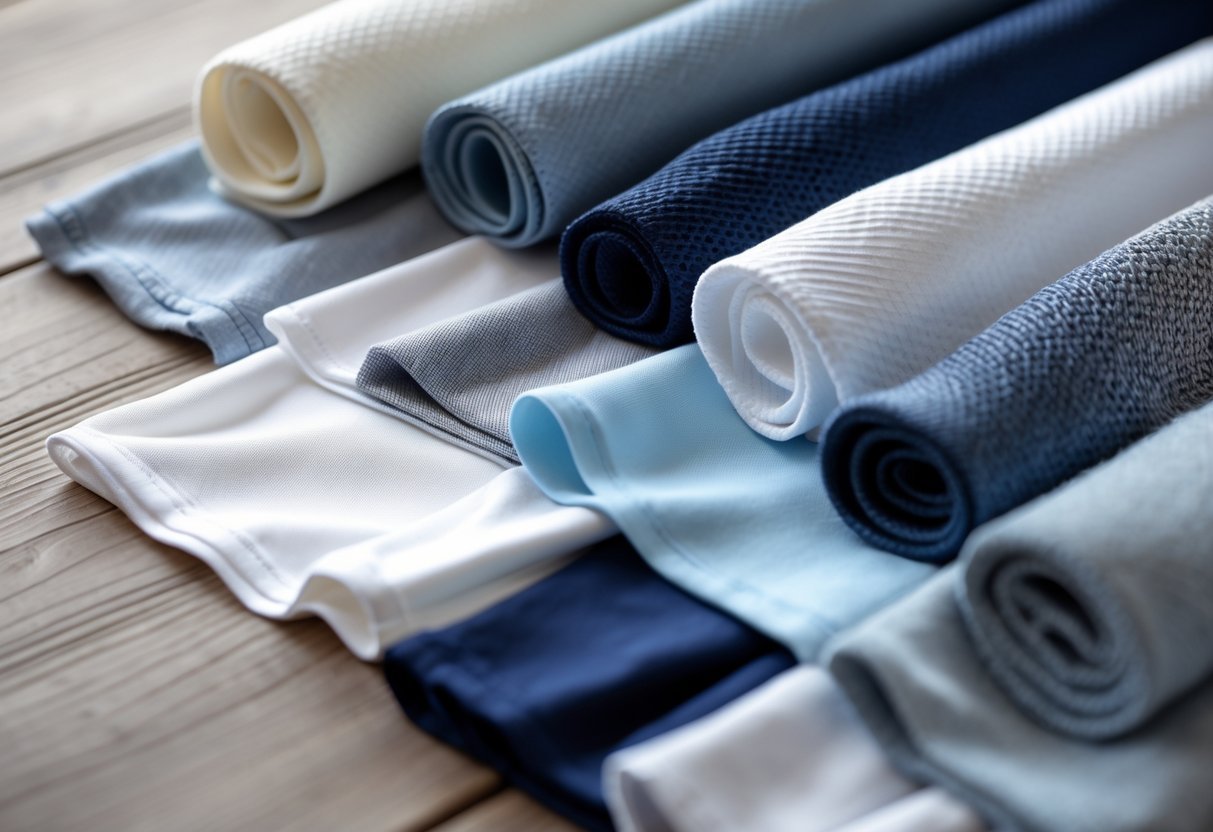
Golf shirt fabrics now include high-quality and natural fibers that enhance comfort and performance. These materials offer benefits like temperature regulation, softness, and eco-friendliness. They are increasingly popular among golfers who want both style and function.
Merino Wool and Natural Alternatives
Merino wool is a premium fabric valued for its softness and natural breathability. It regulates temperature well, keeping players warm in cool conditions and cool in heat. It also resists odors, making it ideal for long days on the course.
Unlike traditional wool, merino fibers are fine and smooth, so they do not itch. This makes merino shirts comfortable for extended wear. They also handle moisture by wicking sweat away from the skin, helping golfers stay dry.
Natural alternatives like bamboo and high-quality cotton blends are also gaining attention. Bamboo fabrics are soft, breathable, and have natural antibacterial properties. These options appeal to golfers looking for natural fibers with added performance.
Trends in Sustainable Golf Shirt Materials
Sustainability is a growing focus in golf apparel. Many brands now use recycled polyester and organic cotton to reduce environmental impact. Recycled polyester performs like new polyester but with less waste.
Organic cotton avoids harmful pesticides and uses less water, attracting eco-conscious buyers. Some fabrics blend recycled and natural fibers to balance performance with sustainability.
Brands emphasize sourcing and production transparency to appeal to consumers who care about the planet. Sustainable treatments like waterless dyeing and biodegradable finishes are also becoming more common in premium golf shirts.
Choosing the Right Material for Your Golf Apparel
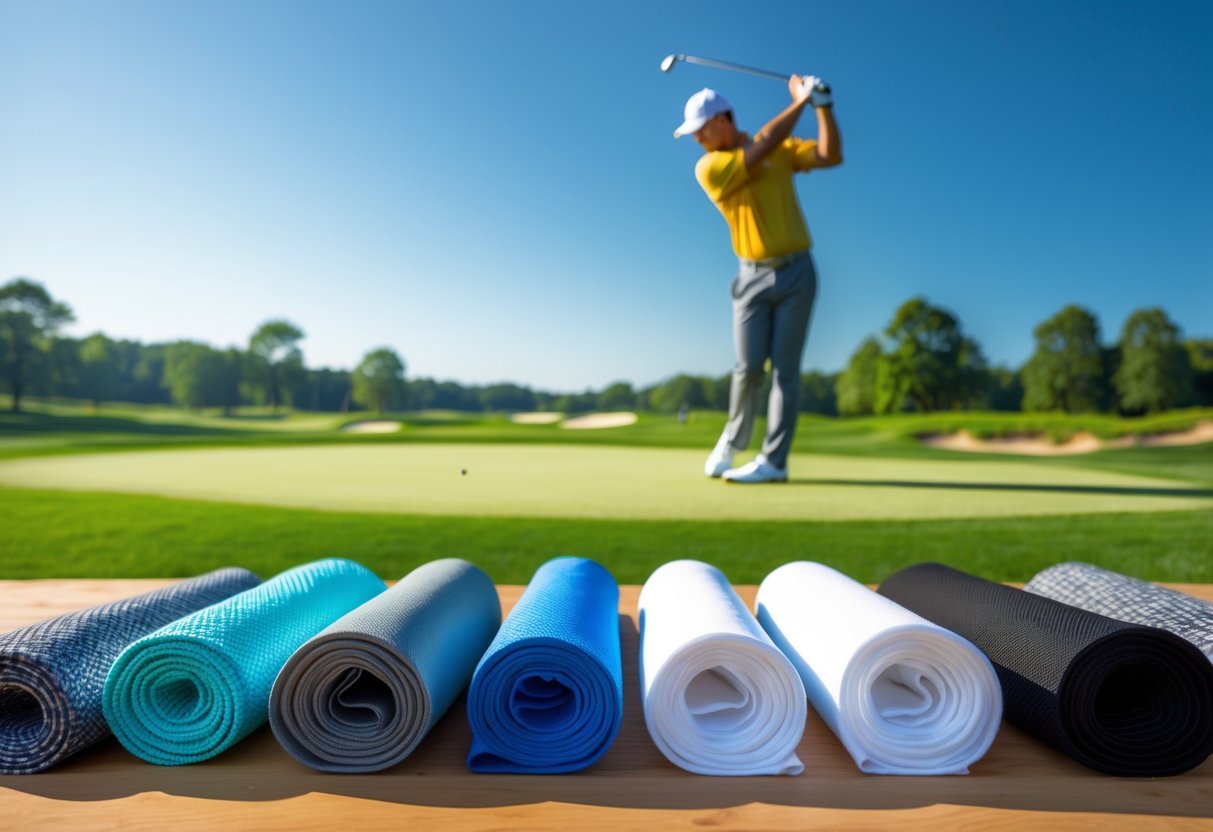
Selecting the right fabric for golf apparel affects comfort, durability, and how well the clothing performs in different weather. Key factors include how the material handles moisture, breathability, protection from the sun, and the maintainability of the shirt.
Factors to Consider for Course and Climate
Golfers should choose materials based on the weather conditions they most often face on the course. For hot and sunny days, lightweight, breathable fabrics like cotton or cotton-polyester blends are ideal. These materials allow air to circulate, keeping players cool and dry.
Moisture-wicking polyester or polyester blends work well for humid conditions by pulling sweat away from the skin. In cooler weather, fleece or wool blends provide warmth without restricting movement. Fabrics with built-in UV protection, such as polyester or treated cotton, help protect from harmful sun rays during long hours outdoors.
Durability is also important. Frequent washing requires fabrics that hold shape and color. Polyester is known for long-lasting wear, while cotton may wear out faster but offers comfort.
Balancing Style, Comfort, and Performance
Golf apparel must look good while supporting physical activity. Polo shirts made with cotton blends often strike a good balance between softness and style. Polyester blends add wrinkle resistance and stretch, maintaining a polished appearance through the game.
Comfort comes from stretch and fit. Adding spandex to fabrics provides flexibility to support a smooth swing without tension. However, too much spandex can reduce breathability, so a moderate blend (about 5-10%) works best.
Performance features like moisture-wicking and odor resistance improve comfort during long rounds. Fabric choice also affects care and maintenance; polyester-based shirts require less ironing and are easier to clean, while cotton offers a traditional feel but may need more careful washing.
Golfers should prioritize materials that keep them comfortable, allow freedom of movement, and maintain style on and off the course.
Frequently Asked Questions
Choosing the best Golf Shirt Materials affects comfort, durability, and performance on the golf course. Key factors include breathability, moisture-wicking ability, stretch, and weight. Different materials work better depending on climate, gender, and personal preference.
What are the most suitable fabrics for hot weather golf shirts?
Lightweight and breathable fabrics with good moisture-wicking properties are best. Polyester and blends with spandex help keep the body dry by moving sweat away from the skin. Avoid cotton because it holds moisture and dries slowly, causing discomfort.
Which materials are commonly used for women’s golf shirts?
Women’s golf shirts often use soft, stretchy fabrics like polyester blends combined with spandex. These materials provide comfort, flexibility, and breathability. Some brands include additional design details but focus mainly on performance fabrics.
How do the materials for men’s golf shirts differ?
Men’s golf shirts commonly use durable polyester, often mixed with spandex for stretch. These fabrics balance toughness with movement and moisture control. Men’s shirts may also emphasize wrinkle resistance and color durability.
What are the benefits of polyester in golf shirts?
Polyester is strong, durable, and resists wrinkles and fading. It offers excellent moisture-wicking, keeping wearers dry during play. Polyester dries quickly and maintains its shape after washing, making it a practical choice.
Where can one purchase premium golf shirt fabrics?
Premium golf shirt fabrics are available through specialty fabric stores and online retailers focused on athletic materials. Brands like Yatta Golf offer polos made with high-quality polyester and spandex blends designed for sports performance.
What are the top considerations when selecting material for custom golf shirts?
Comfort and breathability come first, especially moisture control and stretch. Durability and ease of care matter for frequent use. Custom designs may require fabrics that hold colors well and allow for printing or embroidery without damage.



